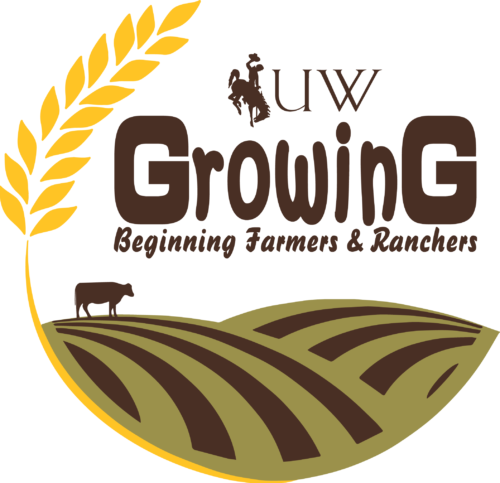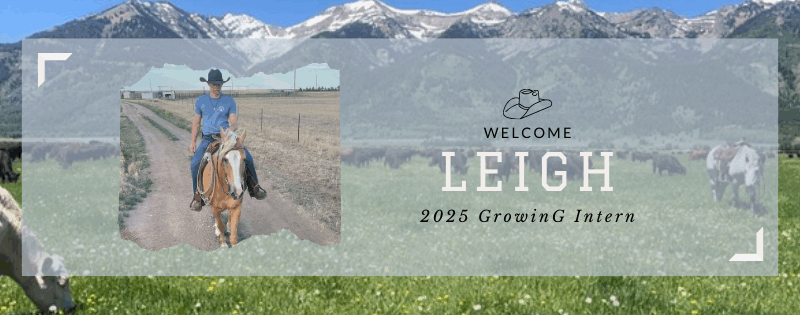No Such Thing as a Slow Start
#bfrdpwy #aginternship #RightRisk
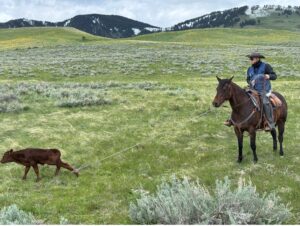
Rain heralded my arrival to the ranch on a Sunday night — it’s been a wet month here in northern Wyoming, and the evening I rolled in was no exception. Upon arrival, I had a quick meet and greet with the ranch manager and his family before settling in to my new living quarters and getting ready for work the next morning.
Monday morning, unfortunately, did not bring a stop to the rain, nor did the rest of the day. As a result, the day’s work was confined to equipment maintenance with the farm guru and fencing with the cattleman. Ultimately, it was an excellent opportunity to learn the people I will be surrounded by and to integrate myself into the working team on the ranch. After fencing, I was shown how to tag calves and was introduced to my first chore—tagging the heifer calves every morning and every night from a side-by-side.
A quick note on that: traditionally, ranches will calve in the winter. This allows for a higher finishing weight, which means (theoretically) more profit. Here, however, they calve in the spring. They have found that their survival rates are much higher, heifers work and move a little better, and the work is more enjoyable — more time spent in the sun and less in the wind and snow.
Tuesday did bring the rain to heel, so we went out on horseback to tag cattle across the road. It was here that I had my first close up of roping for the summer — on this ranch, we tag from horseback as much as possible, which gives us the excuse to perform two of the most enjoyable tasks cowboying has to offer: roping and riding. We spent the morning doing exactly that, with the intermissions being filled with valuable instruction on the whats and whys of the ranch. After tagging, we spent our afternoon moving bulls into a holding pen so that we could run them through on new tags and tests on the next day. While it was rather unproblematic as far as bulls go, we did have to go back for one that was particularly aggressive. After some effort, we managed to get him in the trailer and down the road, where I’ve been assured he’s been turned into prime hamburger meat. To finish the day off, I went out with the cattleman to check on a sick calf we had found that morning, but he was dead by the time we arrived.
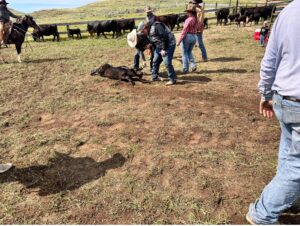
Wednesday’s first task was to remove the calf and his mother from the herd, which was accomplished in the rain by way of dragging the body along, which brought the cow on behind us. Once we got her to a corner in the fence with our trailer, we dropped the calf and loaded her up before loading the carcass back in the trailer just in time for the rain to quit. From there, we went back to the calving barn to skin the carcass to make a jacket for a rejected twin (named Jeep by one of my coworker’s nephews) to graft to the calf-less cow. The graft took, and the cow was dubbed Chrysler as a result. With that done, we moved up the hill to work bulls through the chute, after which they were deposited in the pasture we had fenced on Monday.
Thursday was spent at a branding for another ranch, where I learned how nordforks work. They’re essentially a fork that’s tethered to the ground that will sit behind a calf’s ears, which, when paired with an experienced rider who has the calf heeled, makes the calf stretch out and easy to work. The process is relatively quick and allows for more efficient operation with skeleton crews — not the mention, like most brandings, it’s just flat-out fun.
Friday was the last real workday of the week (weekends are rotated through, with one employee essentially being on call and completing chores as they pop up for the weekend while the others take advantage of the time off). It was one of the busier days this week, kicking off with a round of fencing out near the cows that we had been tagging all week. The manager showed up when I was about half-way down the line and I got pulled for the welcome task of tagging more calves, where I had a few more opportunities to rope and practice the skill. During this, we came upon a rattlesnake, which was handled with leather hobbles and no small amount of aggression. To finish the day, we moved heifers into an adjacent pasture, which I spent learning how to move stock as calmly and easily as possible.
The big take-aways for the week have been the concept of late calving, tagging, roping, and low-stress movement.
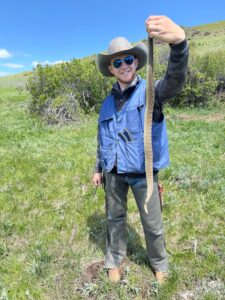
While I spent last summer on a ranch that calved during the traditional time and abstained from roping to reduce cattle stress, I much prefer this way of doing things — calving can be spent in warmer weather and roping is a lot of fun. Tagging, when done in the correct method, can be relatively easy, but it depends heavily on good stockmanship, which is something I’m learning both from experience and a loaned book (The Stockmanship Manual by Stephen Cote). With more experience and time, I’m confident I’ll be able to augment my style to make for significantly easier handling of stock while keeping the job fun.
Submitted by: Leigh Stockton
Edits by: GrowinG Internship Team
